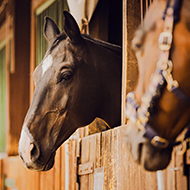Invasive species cause 60 per cent of extinctions, report finds
The black rat, the third most widespread invasive species globally, which has caused bird extinctions.
A new report has found that invasive alien species have been a major driver of 60 per cent of global plant and animal extinctions, and the only driver in 16 per cent.
The report, produced by the Intergovernmental Platform on Biodiversity and Ecosystem Services (IPBES), reveals that more than 37,000 alien species have been introduced by human activities to biomes around the world.
More than 3,500 of these are considered ‘invasive alien species’, a subset of alien species which become established and spread causing irreversible damage to nature.
Although alien species have often been introduced intentionally for their benefits to people, 85 per cent of the impacts had on native species have been negative, with at least 218 invasive alien species being responsible for more than 1,200 extinctions.
Among the invasive alien species known to be impacting the natural world is the North American beaver, which disrupts ecosystems by transforming habitats, and the black rat, the third most widespread invasive species globally which has caused bird extinctions.
The latest report found that, alongside the environmental impact, the global economic cost of invasive alien species exceeded $423 billion in 2019, with costs having at least quadrupled each decade since 1970.
Eradication has been seen as a successful and cost-effective way to manage invasive alien species, with the black rat having been successfully eradicated in French Polynesia. Where eradication is not possible, containing and controlling these species has been seen as effective in many cases.
However, despite the significant natural and financial costs of invasive alien species, only 17 per cent of countries have targets related to managing them and 45 per cent do not invest in managing biological invasions.
The report says that effective management and more integrated approaches may prevent future biological invasions.
Dr Anne Larigauderie, executive secretary of IPBES, said: “The immediate urgency of invasive alien species, with extensive and growing harm to nature and people, makes this report so valuable and timely.
“The governments of the world agreed, in December last year, as part of the new Kunming-Montreal Global Biodiversity Framework, to reduce the introduction and establishment of priority invasive alien species by at least 50 per cent by 2030.
“This is a vital, but also very ambitious commitment. The IPBES Invasive Alien Species Report provides the evidence, tools and options to help make this commitment more achievable.”
Image © Shutterstock



 Zoetis has launched a new survey to identify management techniques for Equine Herpes Virus (EHV).
Zoetis has launched a new survey to identify management techniques for Equine Herpes Virus (EHV).